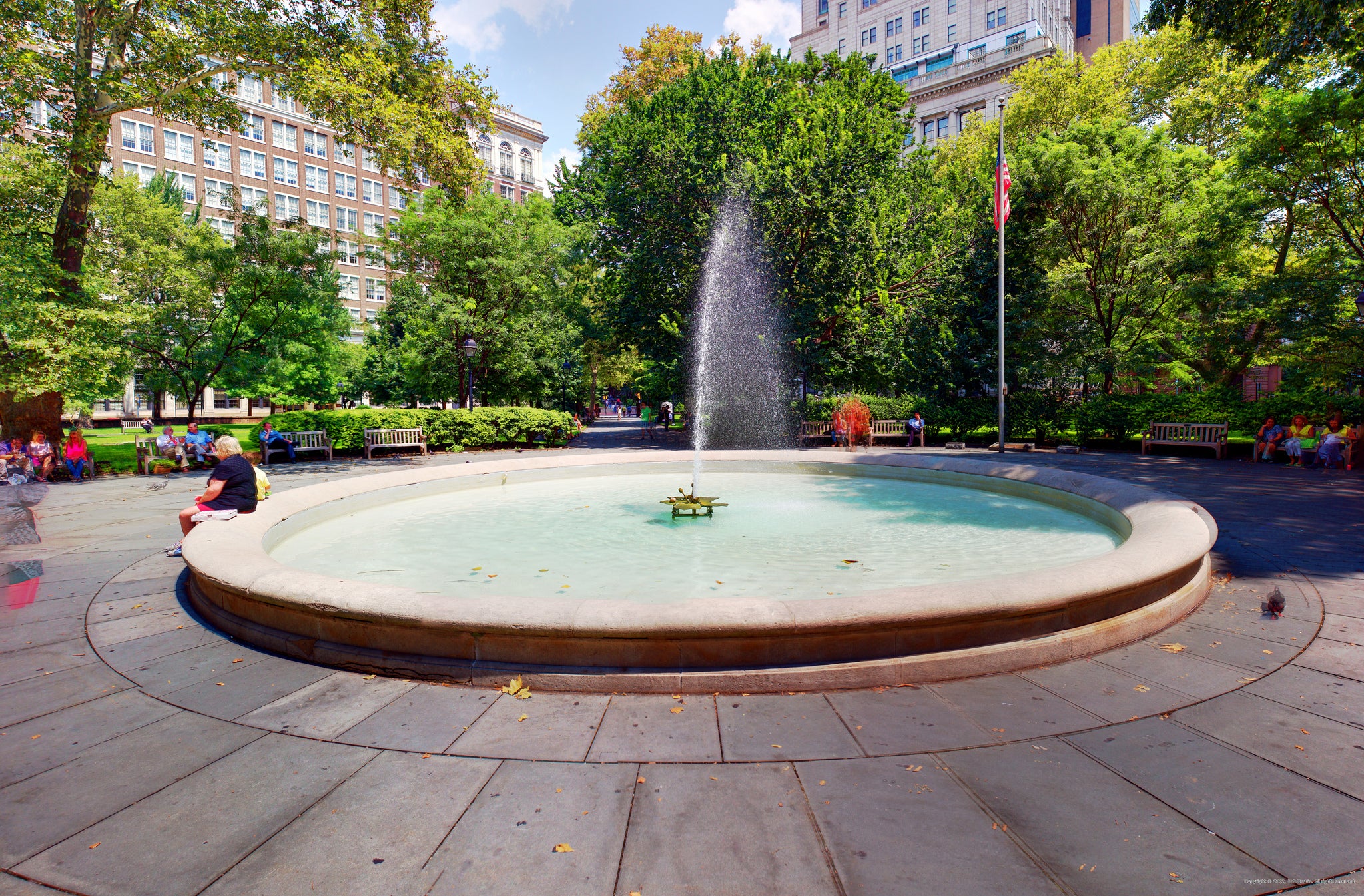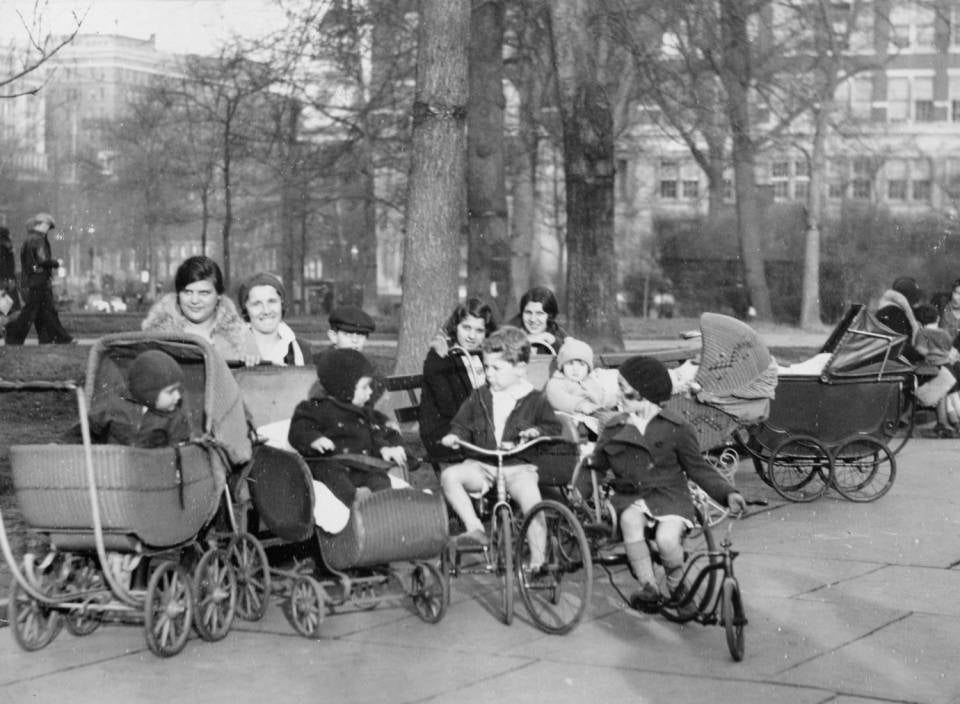On Washington Square: From ‘pervert park’ to classic cultural landscape

In celebration of what would have been Jane Jacobs’ 100th birthday on May 4, we’re taking a look at these four parks, past, present and future. What has remained the same, what has changed, and what is next for these spaces? We will also explore them in person in a pair of walks happening on Sunday, May 8th as part of this year’s Jane’s Walk weekend.
When Jane Jacobs made her observations of Washington Square for “The Death and Life of Great American Cities” the square itself was remarkably similar to today’s park, physically. But it behaved very differently.
It had earned a reputation as a “pervert park,” she wrote, and had become a haven for crime. Even the office workers who once lunched on sunny days started avoiding using Washington Square. A park rehab project in the 1950’s displaced the unsavory users but new cadre of law abiding visitors had yet to take hold by the early 1960’s when Jacobs published.
“Like all neighborhood parks, it is the creature of its surroundings and of the way its surroundings generate mutual support from diverse uses, or fail to generate such support,” she wrote of Washington Square.
Offices dominated the area around Washington Square, preventing the rich variety that so animates Rittenhouse Square, she observed. Beyond the park’s immediate rim sat a low-rise rowhouse neighborhood, making office workers its most common users.
“Does anything about this fact affect the park physically? Yes. This principal reservoir of users all operate on much the same daily time schedule. They all enter the district at once. They are then incarcerated all morning until lunch, and incarcerated again after lunch. They are absent after working hours. Therefore, Washington Square, of necessity, is a vacuum most of the day and evening. Into it came what usually fills city vacuums—a form of blight.”
Today there are still office workers, but the residential mix is much more dense. Society Hill is no longer peppered with abandonment and flophouses, as it was in the early 1960s, revived through an urban renewal that aimed to balance preservation with creative destruction. In many ways the residential shift has driven the park’s slow renaissance too, said Doris Fanelli, chief of cultural resource management for Independence National Historical Park.
“The users have changed radically over time in Washington Square just within the last, say, 50 years. All of these buildings around here were commercial buildings at one time. The lunch crowd was here and they went home at the end of the way. Now, all of these buildings are going condo. We have more residential use, which actually goes back before the commercial uses. It was residential. It’s going back to the future in that sense.”
The National Park Service (NPS) has managed Washington Square for a little over a decade, taking over from the city because the historic square’s past has a “period of significance” closely related to that of Independence National Historical Park. NPS has a phonebook sized cultural resource management report for the park, guided by federal standards for rehabilitation of cultural landscapes. That means when anything in Washington Square changes, the work meets federal preservation guidelines, even down to the planting scheme.
Washington Square’s management as part of Independence is nearly imperceptible, barring the sight of uniformed NPS maintenance crews and subtle signage at the entrances. Step on one side of the street and you’re in a national park site, walk back across and you’re on any city block. What the user is most likely to read in this is the square’s timelessness. It’s a classic, a place where change is measured against federal standards. But, Fanelli stressed, the Park Service understands running an urban neighborhood park differs greatly from managing the Grand Canyon. They appreciate hearing from park users about ways to keep Washington a vital public square.

WHYY is your source for fact-based, in-depth journalism and information. As a nonprofit organization, we rely on financial support from readers like you. Please give today.




